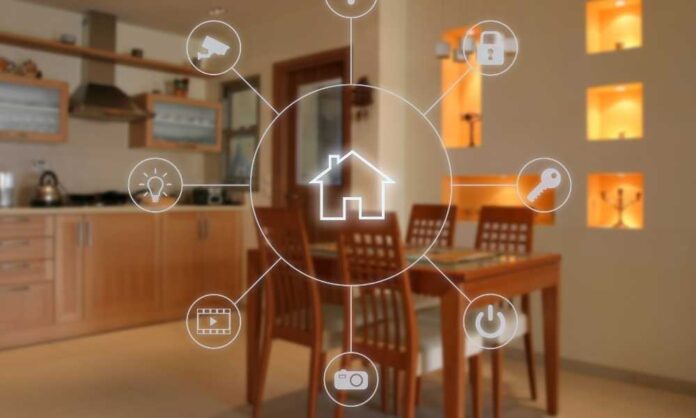In today’s interconnected world, a reliable home network is essential for smooth internet connectivity, online gaming, work-from-home tasks, and much more. However, many users unknowingly make mistakes that hinder the performance of their networks. In this article, we’ll walk you through some of the most common home network mistakes and how to avoid them. Understanding these errors and taking proactive measures will ensure your network operates efficiently, securely, and without hiccups.
Common Home Network Mistakes
1. Ignoring Router Placement
One of the most common home network mistakes is poor router placement. The location of your router plays a crucial role in the strength and stability of your Wi-Fi signal.
Mistakes to Avoid:
- Placing the router in a corner or hidden spot
- Putting the router near thick walls or large metal objects
- Sticking the router inside a cabinet or behind furniture
Solution: For the best performance, place your router in a central location in your home, away from walls, appliances, and obstructions. This ensures that the Wi-Fi signal can reach every corner of your home without interference.
2. Using Default Router Settings
Many people make the mistake of leaving their router’s settings at their defaults. These settings might not provide the best security or performance.
Mistakes to Avoid:
- Using the default Wi-Fi name (SSID) and password
- Not updating firmware regularly
- Not enabling WPA3 encryption for better security
Solution: Log into your router’s settings and change the default Wi-Fi name and password to something unique. Additionally, ensure that your router’s firmware is always up-to-date to improve performance and security.
3. Overloading the Network
Another mistake many homeowners make is connecting too many devices to the same network, leading to slow speeds and poor performance.
Mistakes to Avoid:
- Connecting every device (e.g., smartphones, smart TVs, tablets) to the same Wi-Fi network
- Not utilizing a dual-band router for bandwidth management
- Forgetting to disconnect devices when not in use
Solution: Consider creating separate networks for different devices, such as a guest network for visitors and a dedicated network for high-bandwidth tasks. If your router supports dual-band Wi-Fi (2.4GHz and 5GHz), prioritize heavy usage devices on the 5GHz band for faster speeds.
4. Using Weak or No Encryption
Security is another area where many home network mistakes occur. Without strong encryption, your network is vulnerable to hacking and unauthorized access.
Mistakes to Avoid:
- Using outdated encryption methods like WEP or WPA
- Not setting up a secure password for your Wi-Fi
- Leaving your network unencrypted altogether
Solution: Ensure that your Wi-Fi is protected with WPA3 encryption, which is the latest and most secure option. Set a strong, unique password, and avoid using easily guessable ones like “password123.”
5. Not Updating Firmware Regularly
Your router’s firmware controls its operations. Without regular updates, your router might become vulnerable to bugs and security vulnerabilities.
Mistakes to Avoid:
- Ignoring router firmware update notifications
- Not checking for updates manually
- Forgetting to update when a new version is released
Solution: Most modern routers support automatic updates, but it’s a good idea to manually check for firmware updates every few months. These updates often include security patches and performance improvements.
Check out: Network Automation: A New Approach to Network Assurance
6. Using Inadequate Hardware for Your Needs
Many people don’t upgrade their network hardware when needed, resulting in slow speeds or poor coverage.
Mistakes to Avoid:
- Using an outdated router that can’t handle modern demands
- Using a single router when your home is large
- Not upgrading your modem to one that supports higher speeds
Solution: If your router is more than a few years old or doesn’t support the latest standards (like Wi-Fi 6), it’s time to upgrade. Similarly, if your home is large, consider investing in a mesh network to ensure full coverage.
7. Not Changing the Default Admin Password
While many focus on securing their Wi-Fi network, they forget about the router’s admin interface. Leaving the default admin password unchanged is a serious security risk.
Mistakes to Avoid:
- Leaving the router’s admin password as “admin” or “password”
- Not changing the default login credentials after setup
- Forgetting to update admin passwords over time
Solution: Change your router’s admin password to something strong and unique immediately after installation. This prevents unauthorized users from accessing your router’s settings.
8. Failing to Monitor Network Traffic
Another common mistake is failing to monitor the traffic on your network. If too many devices are consuming bandwidth, it can cause slowdowns.
Mistakes to Avoid:
- Not using any network monitoring tools
- Ignoring abnormal network activity or unknown devices
- Not being aware of which devices consume the most bandwidth
Solution: Use network monitoring tools (many modern routers come with built-in features) to track usage and prioritize critical devices. You can also configure Quality of Service (QoS) settings to manage bandwidth allocation efficiently.
9. Using Extenders Without Proper Configuration
Wi-Fi extenders can help boost coverage, but when not configured correctly, they can actually reduce your network performance.
Mistakes to Avoid:
- Placing the extender too far from the router
- Not using the correct Wi-Fi band for the extender
- Using outdated extenders that don’t support modern Wi-Fi standards
Solution: Ensure your Wi-Fi extender is placed in a location where it can receive a strong signal from the router. Also, choose an extender that supports the latest Wi-Fi standards (like Wi-Fi 6) for optimal performance.
Conclusion
By avoiding these common home network mistakes, you can significantly improve your Wi-Fi speed, security, and overall reliability. Paying attention to your router placement, updating your firmware, and securing your network with strong encryption will provide a smoother, more efficient internet experience. Don’t forget to regularly monitor your network and make necessary upgrades when required.
For anyone who wants a hassle-free, high-performance home network, addressing these simple yet crucial aspects can make a world of difference.
Check out: Best Free Online Whois Lookup Tools

